|
BAe Hawk from HobbyKing
by Trevor Hewson
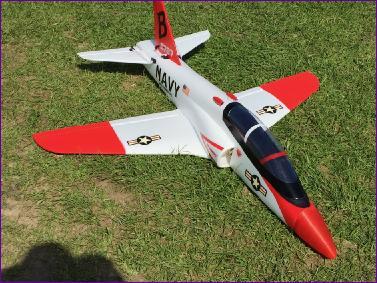
I confess that I'd never had any real intention of building an Electric Ducted Fan (EDF) model. For a start, they tend to sound like flying hair dryers, are often underpowered and usually pose problems with take off or launching. At least, that's how I had been conditioned from witnessing EDFs in the earlier days of electric flight, and I hadn't really given it much thought since.
Then Frank Bayes pointed out that HobbKing had reduced this model to the ridiculous price of £29, and it was in stock in the UK warehouse. Okay, this didn't include any servos or a motor but it did include the fan unit. At that price, stocks were clearly not going to last long so an instant decision was called for so, figuring that I was more likely to regret missing out on the deal than I was to fret about the waste of £29, I ordered it.
The quality of the kit is generally excellent. It's a foamie of course, except for the nose cone which is an extremely flimsy plastic blow moulding which looked as if it would shatter at the first contact with the ground. It was also shaped slightly oddly, giving the Hawk rather a Concord-like droop nose appearance. Others had observed this too and another helpful modeller had published a file for a 3D printed version so I was able to get one printed off in red. Not a perfect match, but every bit as good as the original, much stronger and a better shape too.
The instructions for the Hawk are seriously wide of the mark on powerplant recommendations, suggesting a 1600mah 3s LiPo battery and a 3200kv motor. I seriously doubt that the model would get airborne with this setup and, if it did, would have a flight duration of about 2 minutes. In spite of the advances made with EDFs over the years, the fact is that they are still seriously inefficient and a browse of the forums confirmed that a 3300mah 4s LiPo would be needed for anything like a satisfactory combination of performance and duration.
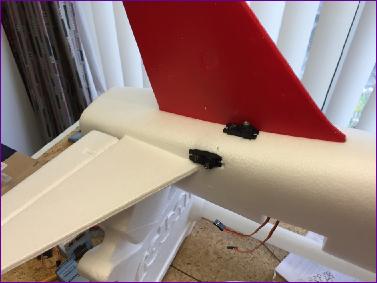
Unfortunately, although there is plenty of room for the larger battery, it does make the model very nose heavy, meaning that yet more weight has to be added to the tail end. To try to minimise this, I abandoned the official elevator servo location (under the rear of the cockpit) and instead installed twin servos at the tail end. While I was about it, I hacked out another hole for a rudder servo as well.
The model comes with a fixed undercarriage. I really can't understand the thinking behind this. At this scale, the model would only be able to take off if a tarmac runway is available and even then, the sight of a jet hurtling around with its wheels dangling down doesn't really appeal. So the gear was left off - at least that's one credit entry on the weight account
As I got the model together it was clear that, even with the three servos at the rear, it was still going to be nose heavy. Then I had an idea. The service duct which, as well as housing the wires from the motor, is also meant to accommodate the ESC, elevator servo, elevator pushrods and receiver, looked just about big enough to take the back end of a 3300mah 4s LiPo. Since the elevator servo had already been re-located, all I had to do was move the receiver and ESC forward where the battery was originally intended to go and, sure enough, the battery was a snug fit in the mouth of the service tunnel. I did have to relieve the underside of the foam canopy floor a bit and, since the canopy was now doubling as a battery retainer, I installed a positive canopy latch to supplement the rather weak magnets provided.
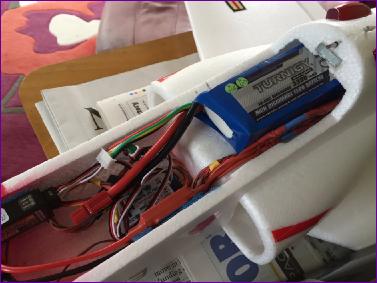 Â Â 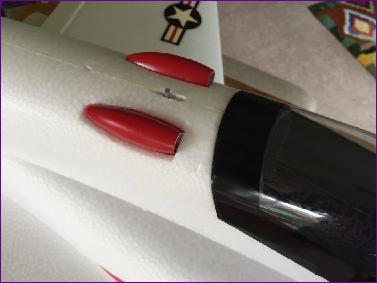
There's no cg recommendation at all in the instructions but there was for once a clear consensus on the web and, with everything in place, my Hawk now came out just slightly tail heavy. A small piece of lead screwed to the vacant nosewheel mounting fitting soon sorted that out.
The first outing did change my views on EDF somewhat. The model didn't sound like a demented hair dryer. In fact the sound was quite pleasant and, after being subjected to assessment by the club's noise meter (aka the Chairman's ear!) was given clearance to fly at our club field. Performance is good. It's not going to break any speed records but large loops are possible from level flight. Duration is not brilliant though - 3-4 minutes being about the limit, even with the large 4s battery. And getting away from a hand launch was indeed a challenge, especially since, with the low wing, it is not an easy model to launch in the first place.
(Agreed: here’s “not quite hard enough” and “just right” launches by Peter - Ed)
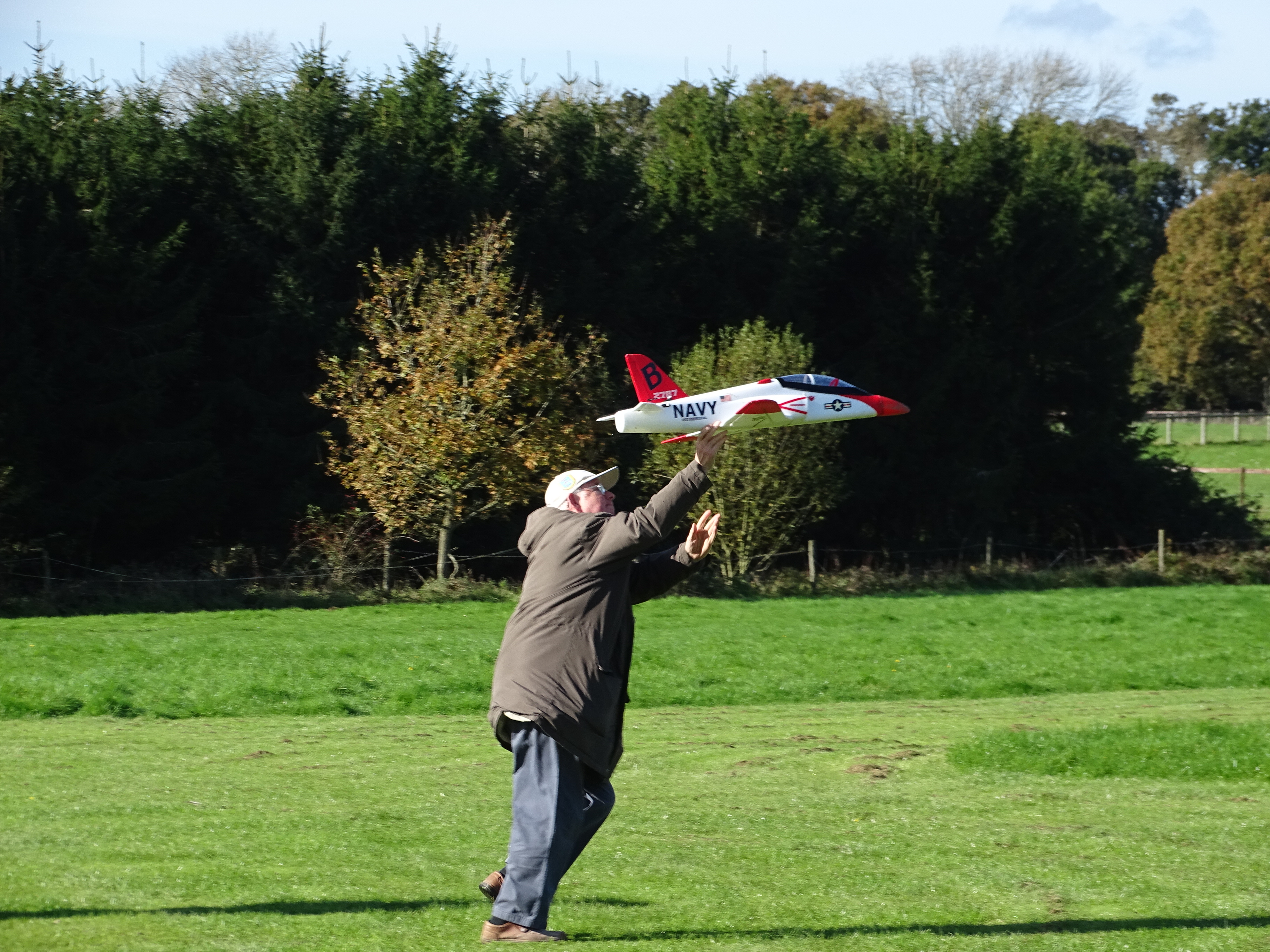 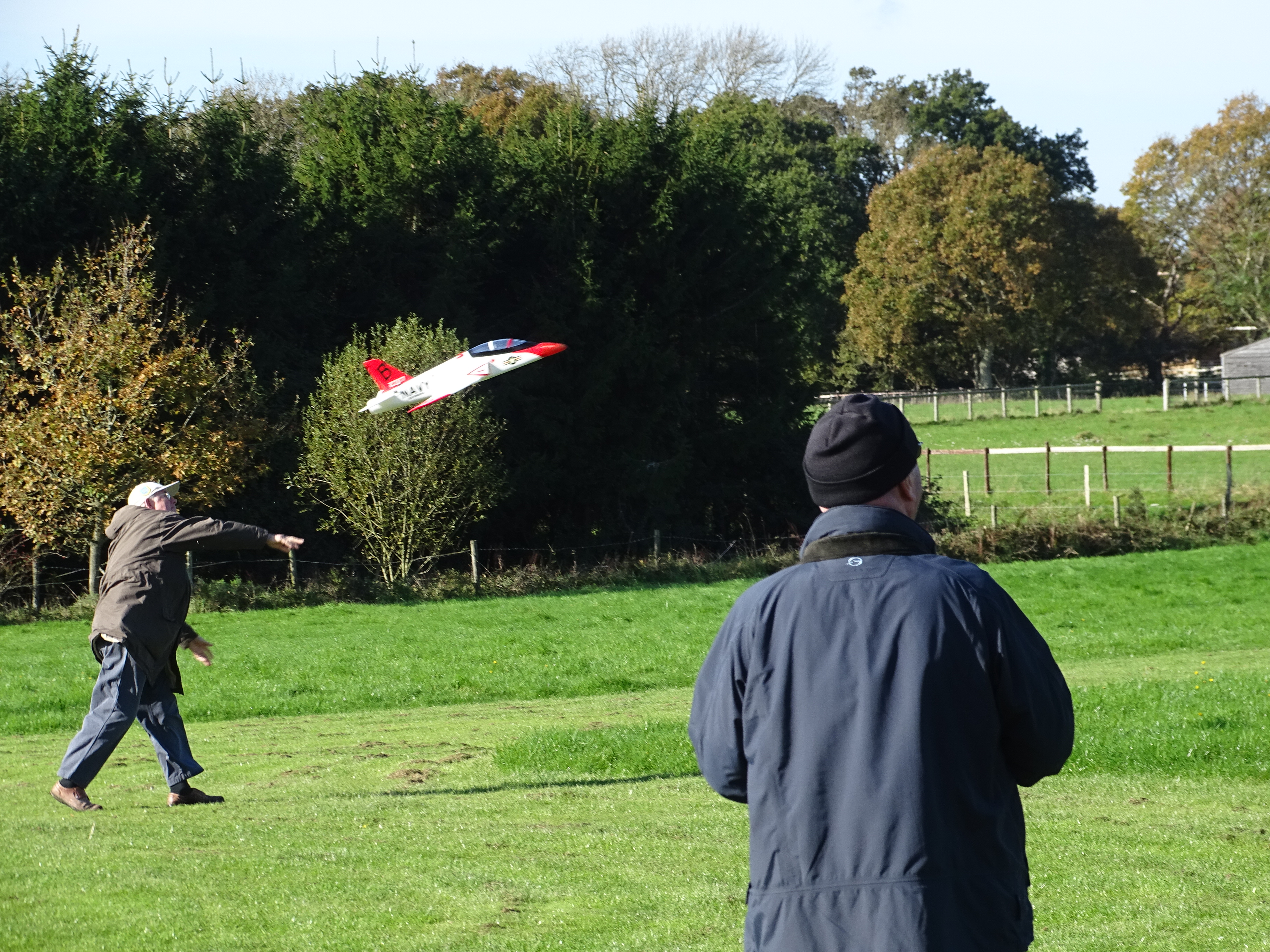
Contemplating this last issue, I was busy researching ramps and bungee launch systems but really wasn't looking forward to having all that additional clutter to cart around. Then I suddenly remembered that I had an Eagle Tree Guardian 3D stabiliser laying around doing nothing. Thanks to the large vacated battery bay, installing the Guardian was straightforward so, 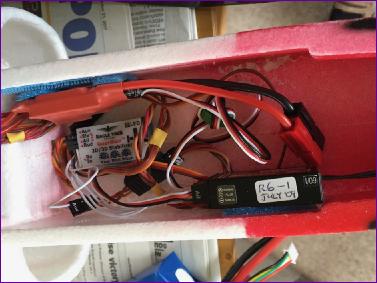
with everything set up, before the next launch I engaged 3D Heading Hold mode, held the model at the desired climb out attitude, waggled and released the right hand stick, opened the throttle and gave my launcher the nod. What a revelation! The moment the model left his hand the Guardian levelled it up and it powered away straight and level. So reliable is this method that I'm now confident to launch the model myself, knowing that all I've got to do is to give it enough airspeed and the Guardian will take care of the rest.
So, the Hawk looks like being one of those impulse purchases that works out. If you want one, the good news is that, at the time of writing (September 2017) it is back in stock at the UK Warehouse. It will though cost you £53.32 rather than the £29 I paid. So, forgive me if I sign off now feeling suitably smug :)
(She’s a tricky beast to get good pictures of, but here’s one from October - Ed)
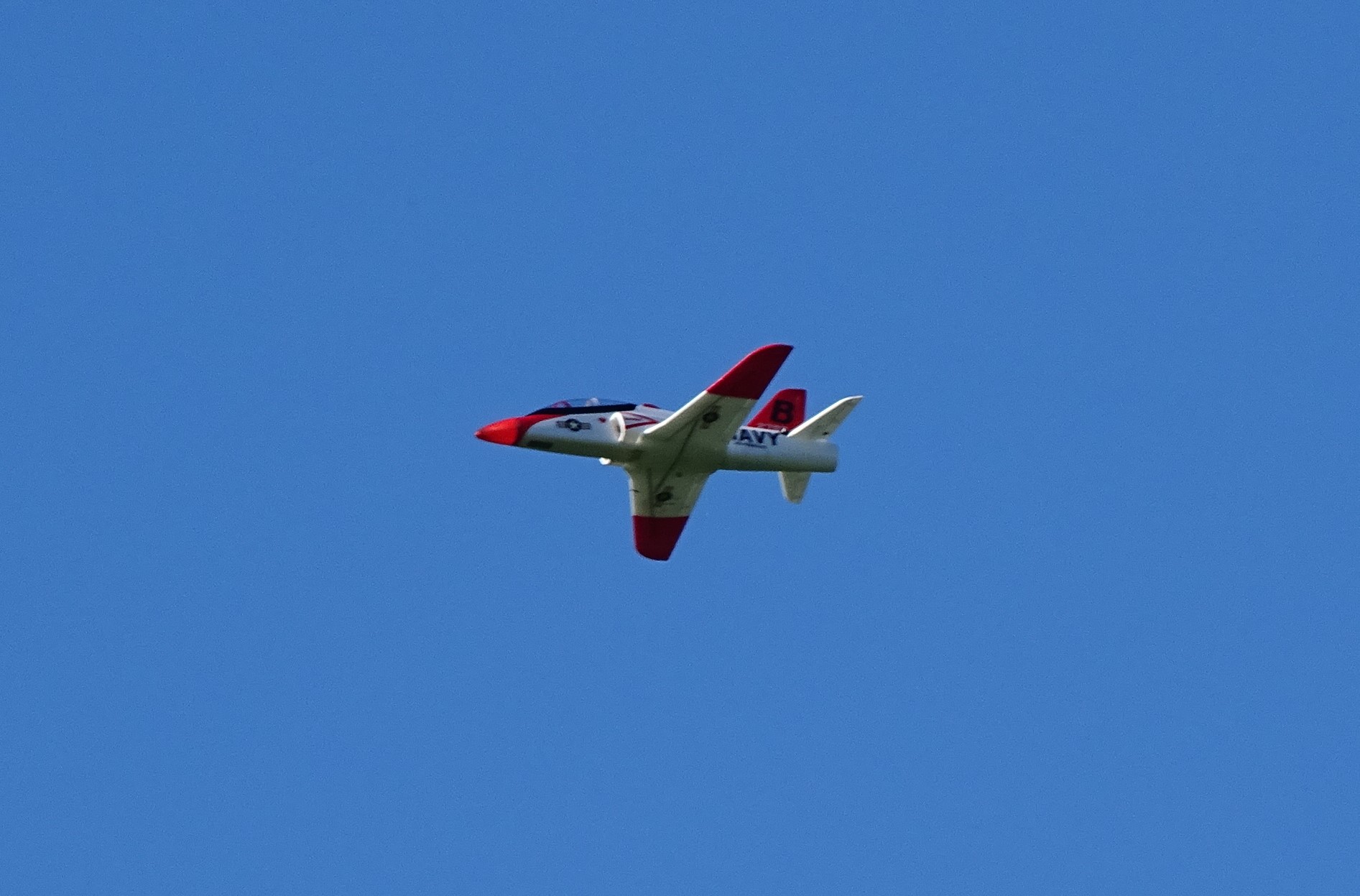
 
|